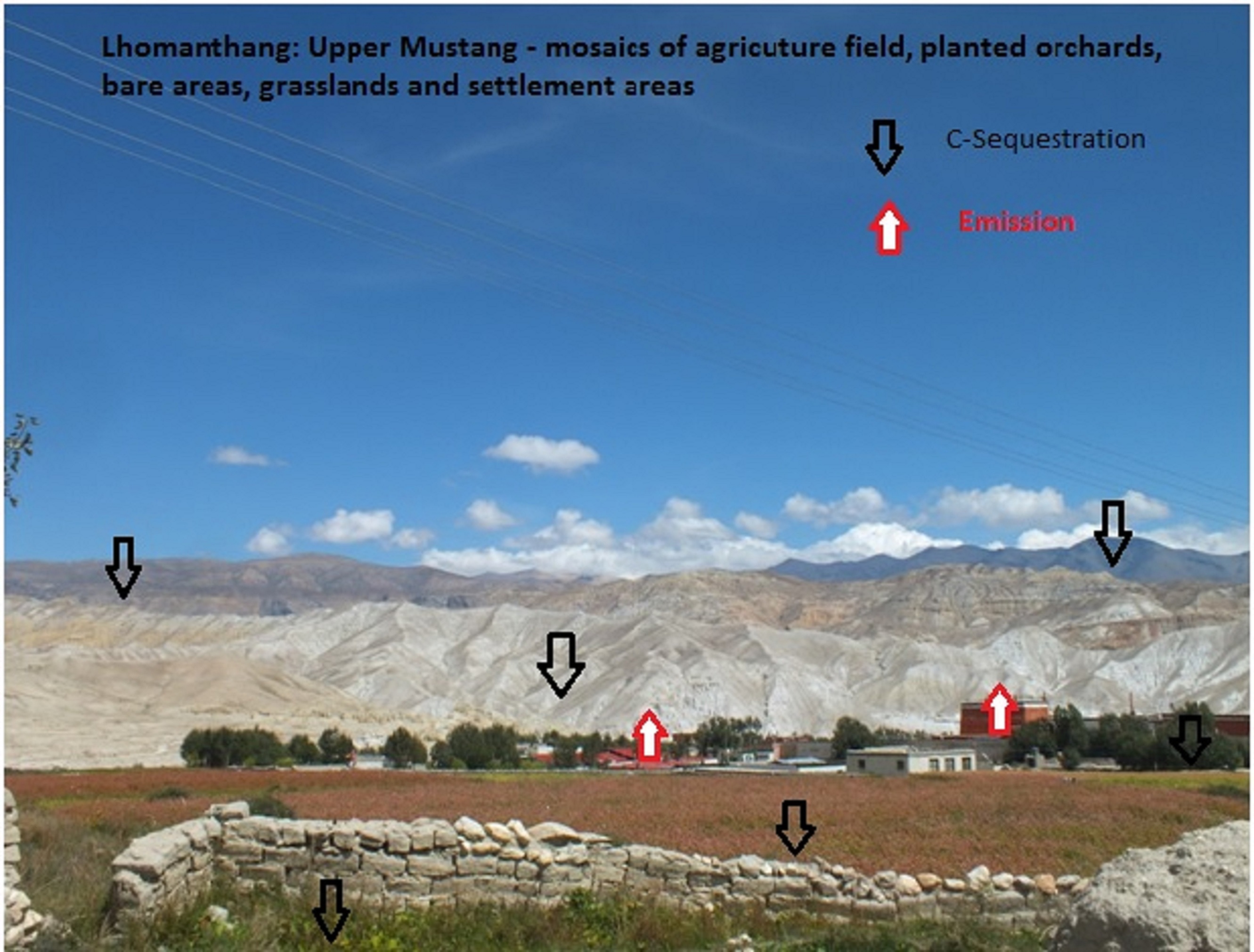Preprint
Article
Soil Properties Linking to Climate Change Mitigation and Food Security in Nepal
Altmetrics
Downloads
1009
Views
758
Comments
0
A peer-reviewed article of this preprint also exists.
supplementary.docx (3.18MB )
This version is not peer-reviewed
Submitted:
31 December 2016
Posted:
02 January 2017
You are already at the latest version
Alerts
Abstract
Crop productivity is directly dependent to soil fertility. High soil organic carbon (SOC) content in soil is vital as it leads to improved soil quality, increased productivity, and stable soil-aggregates. In addition, with the signing of the climate agreement, there is growing interest in carbon sequestration in landscapes. This paper looks at how SOC can be increased so that it not only contributes to reduction of CO2, but also translates to increased food production thereby enhancing food security. This synergy between mitigation and enhancing food security is even more relevant for mountain landscapes of the Hindu Kush Himalayan (HKH) region where there remains huge potential to increase CO2 sequestration and simultaneously address food security in the chronic food deficit villages. Soil samples were collected from seven transects each in Bajhang and Mustang and from 4 land use types in each transect. Samples of soils were taken from two depths in each plot; 0-15 cm below the soil surface and 15-30 cm below the soil surface to compare the top soil and subsoil dynamics of the soil nutrients. The lab analysis was performed to assess the soil texture, soil color, soil acidity in 'power of hydrogen' (pH), macro-nutrients as soil fertility. Secondary data was used to analyze the level of food deficit in the villages. The result shows that most of the sample soils from Mustang were clay (82.1%) which is 46 samples out of 56. The pH value of soil from Bajhang ranged from 5.29 to 9.09. The pH value of soil ranged from 5.65 to 8.81 in Mustang. SOC contents of sampled soils from Bajhang ranged from 0.20% to 7.69% with mean amount of 2.47% ± 0.17. SOC contents of sampled soils from Mustang ranged from 0.51% to 8.56% with mean amount of 2.60% ± 0.25. By land use type, forest land had the highest carbon (C) content of 53.61 t ha-1 in Bajhang whereas in Mustang, agricultural land had the highest C content of 52.02 tons ha-1. Based on these data, we can say that there is potential for increasing SOC through improved soil health and crop production and soil. Sustainable soil management should be practiced for higher productivity. Livestock may also provide farmyard manure, which can be used to fertilize cultivated soils, which increases soil productivity. Increasing productivity would aid in increasing the access and availability of food in these mountain villages.

Keywords:
Subject: Environmental and Earth Sciences - Environmental Science
Copyright: This open access article is published under a Creative Commons CC BY 4.0 license, which permit the free download, distribution, and reuse, provided that the author and preprint are cited in any reuse.
MDPI Initiatives
Important Links
© 2024 MDPI (Basel, Switzerland) unless otherwise stated





